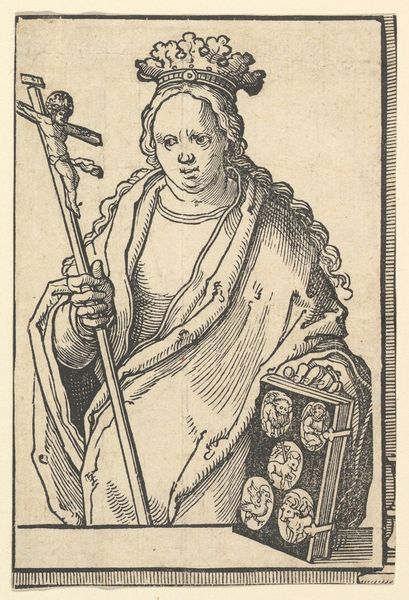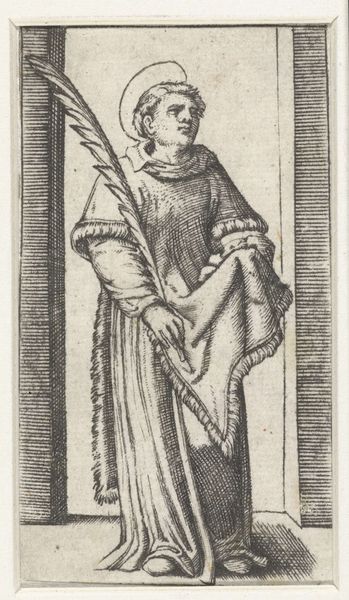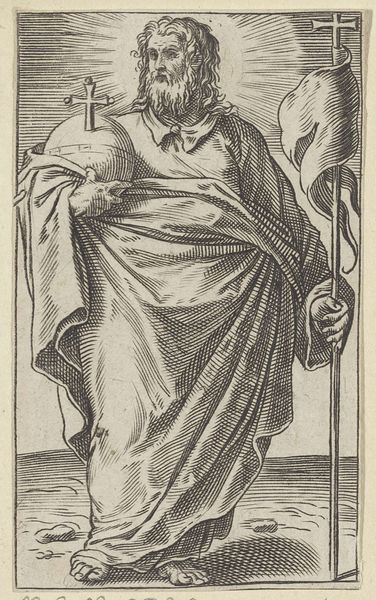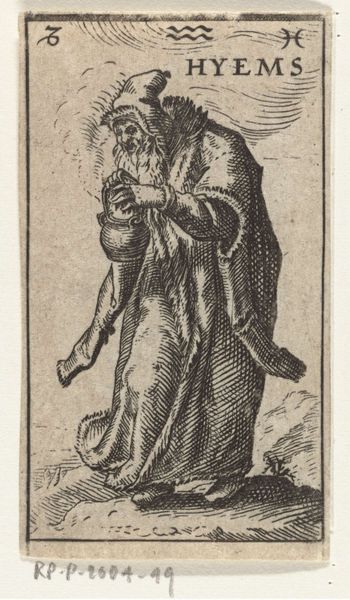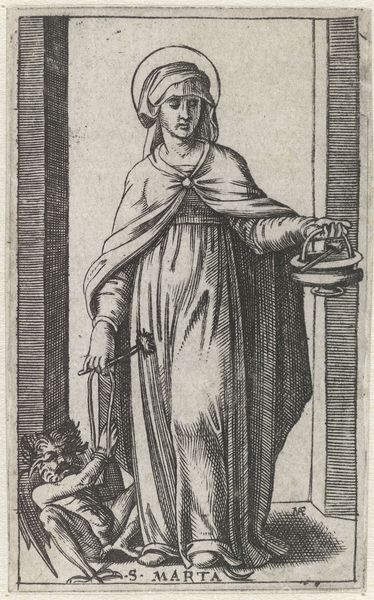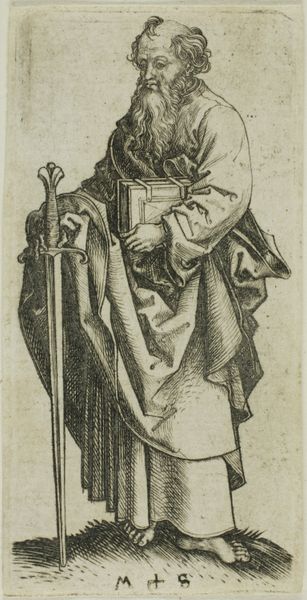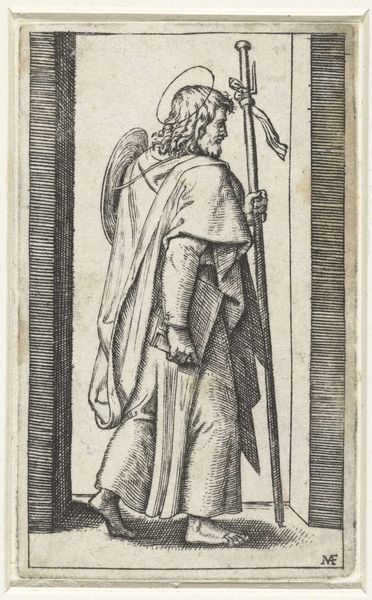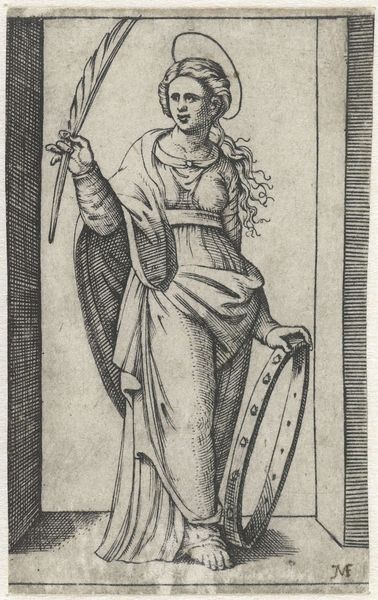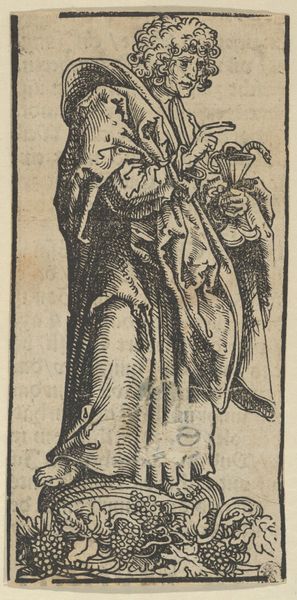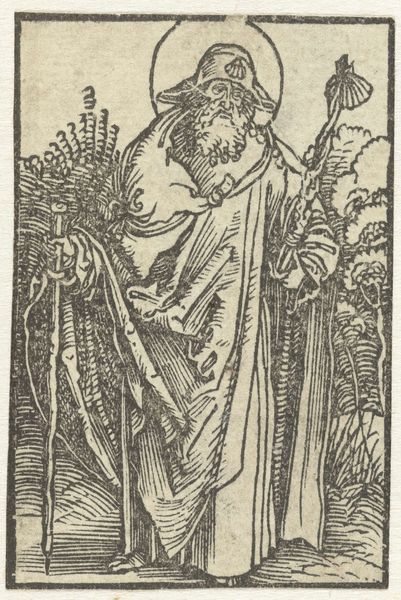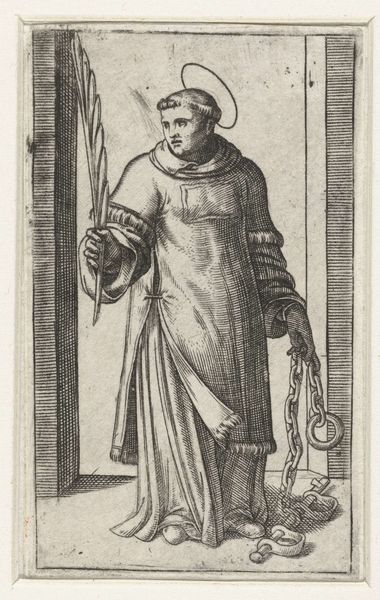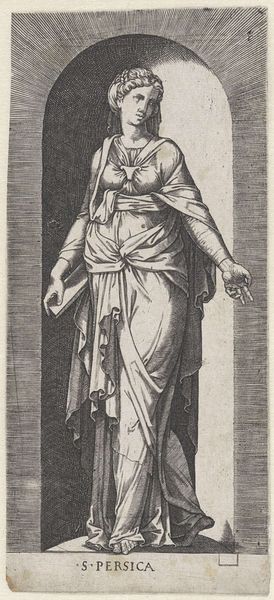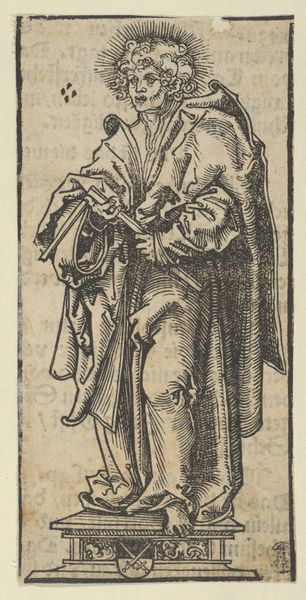
print, engraving
#
portrait
#
allegory
# print
#
caricature
#
portrait drawing
#
northern-renaissance
#
engraving
Dimensions: height 121 mm, width 84 mm
Copyright: Rijks Museum: Open Domain
Editor: So, here we have an engraving titled "Personification of the Christian Faith" made by an anonymous artist sometime between 1528 and 1583. I'm immediately struck by how…earthy the personification feels. It's quite different from the ethereal images I often associate with religious allegory. What strikes you about this piece? Curator: What’s key is to consider the socio-economic circumstances of printmaking at this time. This wasn't oil painting for a wealthy patron; engraving allowed for wider dissemination. How do you think the *materiality* of a relatively inexpensive, reproducible image would shape its visual language? Note how the subject’s strong, almost confrontational gaze might engage with a different, broader, potentially less affluent audience. Editor: I see what you mean. It feels much more…direct. Almost like propaganda, in a way. Are the materials involved--the metal plate, the ink, the paper—influencing that directness, making it less refined perhaps? Curator: Exactly! Think about the labor involved in creating an engraving versus a painting. There's a kind of workaday quality that is intrinsically bound to the materials and the repetitive, skilled labor necessary for mass production. Does understanding that change your perspective on the final image at all? Consider how printmaking democratized religious imagery. Editor: Absolutely, it gives it a whole new dimension! Seeing it as something actively produced, replicated, and consumed, not just a devotional object, is eye-opening. It speaks to the broader Reformation and the shift in access to religious iconography. Curator: Precisely. Considering the mode of production shifts our focus from purely aesthetic or theological concerns to understanding the artwork as a product of a specific set of material conditions and social needs. Editor: It really emphasizes the "how" and "why" it was made, not just the "what" it depicts. Thank you for helping me think about this piece in such a new way. Curator: My pleasure! Paying attention to these often-overlooked aspects, such as materiality and social context, adds enriching layers to our interpretation and appreciation of the art.
Comments
No comments
Be the first to comment and join the conversation on the ultimate creative platform.
